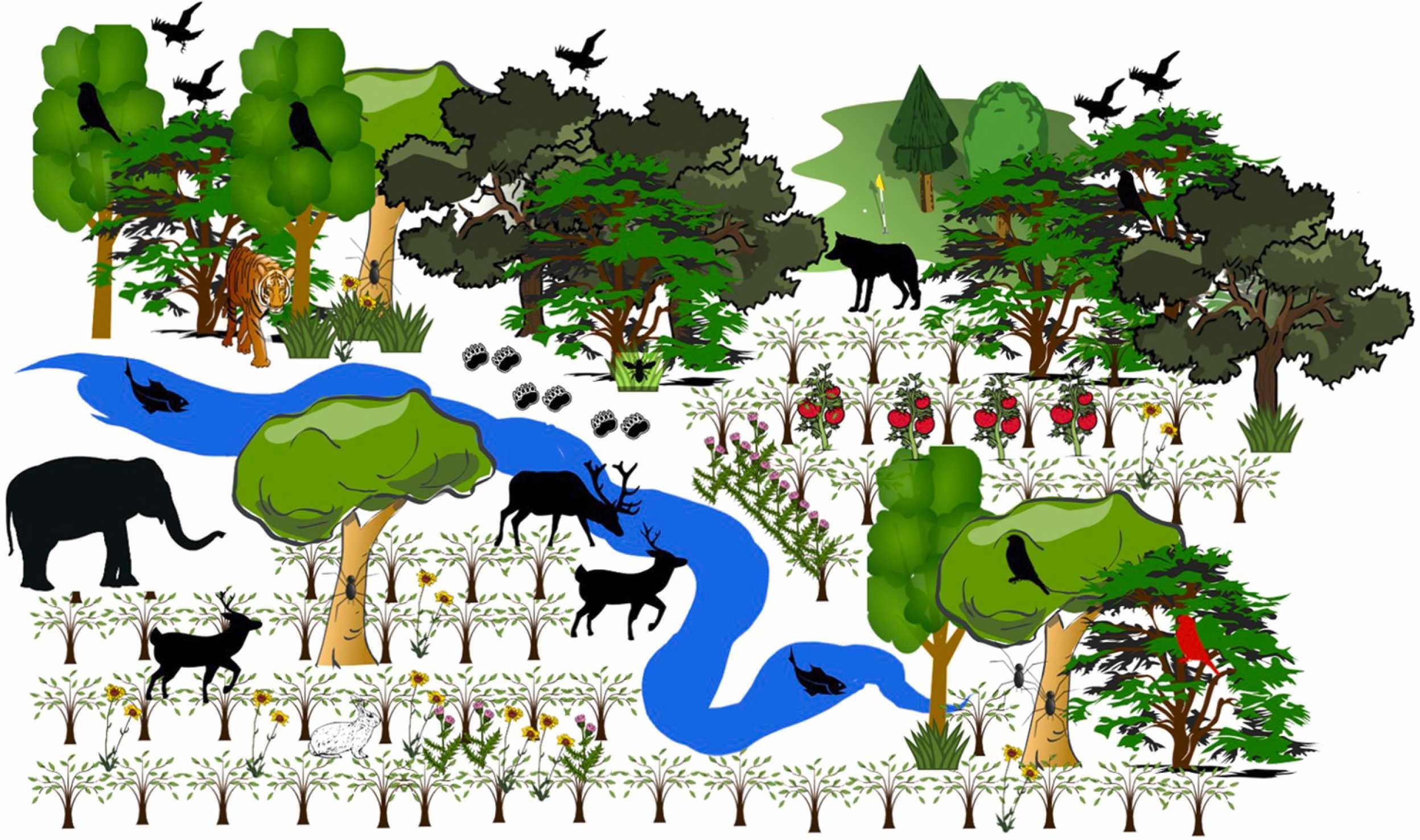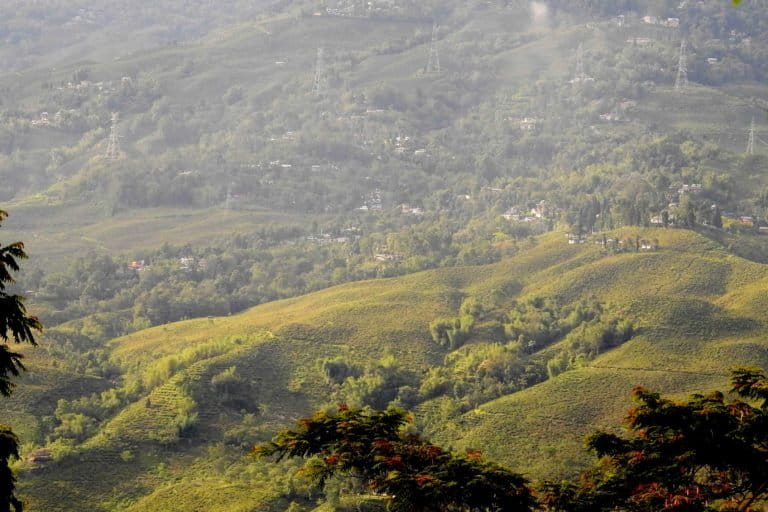- Ancient and traditional tea agrosystems harbour unique, native and diverse biodiversity, according to a new study.
- Tea-agroecosystems can support biodiversity conservation outside protected areas.
- Third-party certifications that vouch for sustainable agroecology practices in tea gardens, such as incorporating organic farming, native shade trees, and maintaining habitat diversity, can promote biodiversity management in these spaces.
New research reveals tea plantations can support biodiversity from native plants, wildlife and microorganisms when managed in an agro-ecological setting with sustainable, good practices. Scientists at Ashoka Trust for Research in Ecology and the Environment (ATREE) scoured through 78 peer-reviewed and 47 grey literature, discovering that tea is grown in 26 different ways across 25 countries – from ancient tea forests to tea monocultures (agriculture based on growing only one type of a crop at one time on a specific field).
While the expansion of tea plantations and conventional management practices have been the main threats to biodiversity, tea agroecosystems can align with conservation outside protected areas through traditional practices or incorporating organic farming, native shade trees, and maintaining habitat diversity within monocultures. The research says that these sustainable, good agroecology practices often considered as standards by multiple certifications can “nudge” biodiversity management.
“Monoculture agriculture managed intensively and conventionally is detrimental for biodiversity. Vast expanses of monoculture plantations have been found to have a negative impact on biodiversity because of the lack of canopy cover that reduces heterogeneity by removal of native shade trees and conversion of remnant forests, and use of harmful chemical pesticides and fertilisers,” Annesha Chowdhury, who is working on how tea landscapes harbour biodiversity, told Mongabay-India.
“On the other hand, tea monocultures that are managed organically, with the introduction of native shade trees in the tea matrix and maintain sub-habitats allowing for a mosaic of multiple land-covers such as remnant forests, agroforestry farms, riparian corridors within the tea, enhance biodiversity support in an otherwise inhospitable matrix,” she said.
The authors write in the paper that with most tea getting certified and focusing on landscapes rather than just the product, one can convert monocultures into a mosaic of landscapes that support biodiversity and the livelihoods of people dependent on them. Traditional tea agrosystems exist as small to medium farms that often merge and integrate with the natural ecosystems such as forests around them. Apart from aiding the growth of multiple varieties of tea, including wild ones, vegetable crops and other flora and fauna that are not harvested for consumption, they support ecosystem goods and services.
“Tea itself doesn’t help in biodiversity growth; however, there are narratives from around the world which can serve as evidence that when tea is managed to be part of the larger landscape and preserve biodiversity, it becomes a complimentary space for biodiversity conservation in addition to existing protected areas,” Chowdhury said.
For example, Nuxalbari Tea Estate and Tenzing Bodosa‘s elephant-friendly certified tea in Assam are stories of how tea agroecosystem management was adjusted to make room for elephant migration routes.
Similarly, ancient tea agroforestry farms and tea forests in China, have been surveyed extensively to show that they support greater biodiversity than intensively managed tea monoculture plantations. In Sri Lankan Analog forests, the multi-tier agroforestry system mimics a natural forest and supports a host of endemic species of mammals.

In the Western Ghats, empirical assessments have supported that riparian corridors and remnant forest patches in tea agroforestry systems support bat assemblages sensitive to intensive management interventions. There is evidence from Japan’s traditional tea-grassland integrated system supporting over 300 species of grass – showing how biodiverse tea production landscapes can potentially be, points out Chowdhury.
“In Thailand, wild tea forests support old-growth endemic species such as Schima wallichii, Castanopsis tribuloides and magnolia and multiple varieties of tea, imitating forest-like conditions,” she added.
Adopting third-party certifications with strong standards that reflect on the ground has been identified as a way that monoculture plantations and tea brands can move towards biodiversity-friendly practices due to the demand for ethical products. “A lot of tea planters and agencies have seen the benefits of certification; however, it has to be done to benefit all stakeholders dependent on the entire landscape and not just the production system itself,” Chowdhury said.
“With the growing enthusiasm among tea producers to sustain biodiversity within their farms, these can become reconciled habitats as complimentary spaces for conservation and may not be as bleak as generally perceived,” the authors write in the study.
Buddhadeb Das, a scientist at Tocklai Tea Research Institute in Assam, said tea plantations roughly resemble a “single species forest,” and a wide range of floral and faunal diversity coexist by a well-defined stratification and/or ecological niche formation. “The natural and semi-natural areas of the tea estates offer refuges not just to common organisms but many of Assam’s endemic and threatened flora and fauna,” Das told Mongabay-India. He adds that tea planter E. P. Gee wrote an account of his wildlife work in the 1964 book Wildlife in India. The tea garden bungalows established by the British have a large collection of various insects, plants. “Even a mixture of organic and non-organic tea plantations in an area can help maintain biodiversity,” said Das.

Describing the study as informative, another Tocklai scientist Devajit Borthakur, said the Tea Research Association may consider collaborating with ATREE on research projects to develop indigenously-managed traditional tea agroforestry landscapes to retain maximum biodiversity in tea gardens. “It may be possible to develop a ‘Chagusaba’ type tea-grassland integrated system that is popular in Japan,” he said.
Banner image: Remnant forests in large tea monocultures in Darjeeling, Eastern Himalayas. Photo by Annesha Chowdhury.
